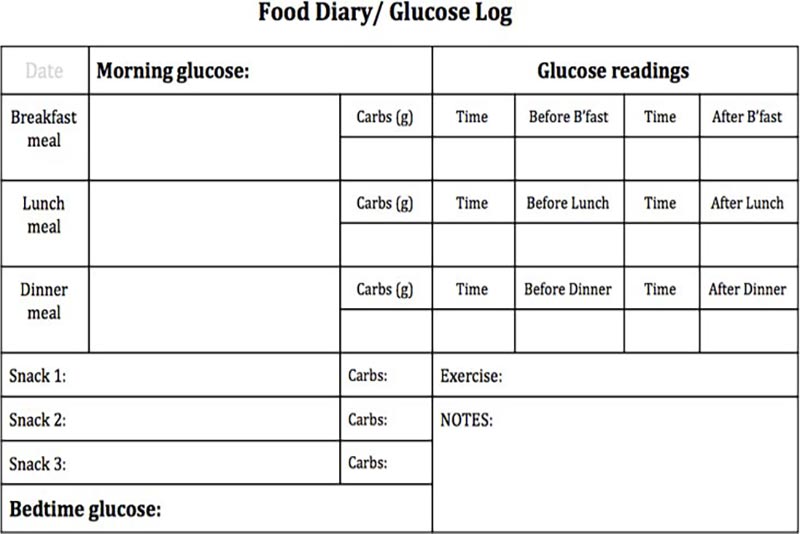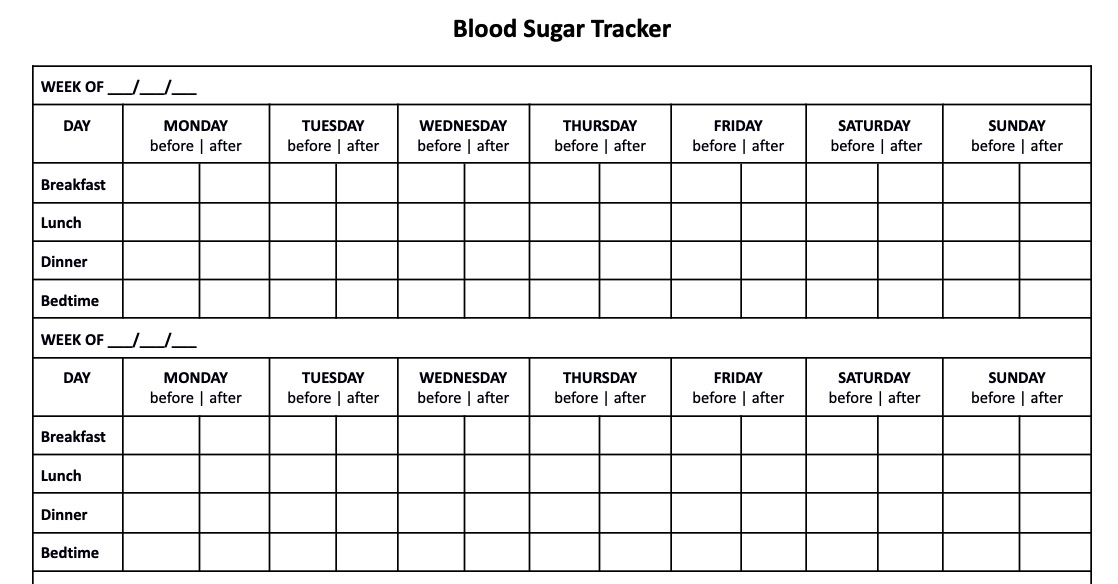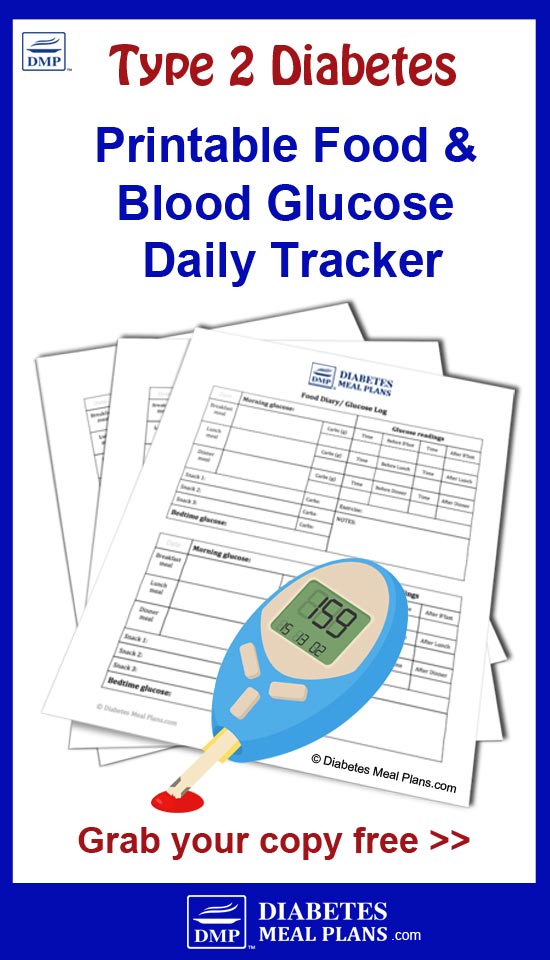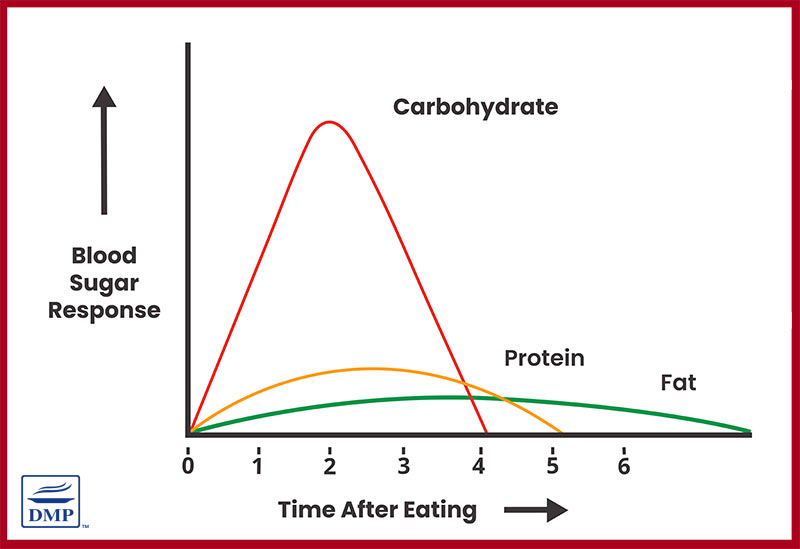Table of Contents[Hide][Show]
As a person with type 2 diabetes, it is critical that you gain the best control of your blood sugar levels as you possibly can.
While taking medication may be necessary, it shouldn’t be the only thing you rely on. You also need to focus on dietary and lifestyle changes to maintain the best level of health and avoid serious complications.
To understand the level of control you have or what is influencing your numbers, you need a food and blood glucose tracker. So while you’re here make sure you download a copy of our printable tracking sheet.
Blood glucose tracking helps you understand your body better and also acts as an accountability tool. After all, numbers don’t lie!
By keeping a log of your numbers, you’ll see patterns emerging that can help you get better results.
For example, if you see that your numbers are constantly running high (above 140 mg/dL or 7.8 mmol/L 2-hours after meals), you can look at diet, exercise, stress, sleep and other lifestyle factors and make the necessary adjustments.
Tracking your Blood Glucose
Our printable food and blood glucose tracker allows you to enter your daily numbers alongside your food intake, so you can really zone in on how you’re traveling and what might need to be changed.

Use the tracker to enter your numbers for morning and bedtime glucose, along with the times and readings before and after breakfast, lunch and dinner.
There’s also a second tracker included in the free download, which displays just your numbers over a three week period, so you can use that if you prefer.


Please pin, tweet or share this free resource; then keep reading.
Tracking your Food
While tracking your blood glucose is important, tracking your food is equally important. Why?
Because the foods you eat, particularly carbohydrates, have a direct influence over your daily numbers.
When you eat foods, it’s the body’s normal biological response to react to those foods. But carbohydrates in particular have the greatest impact.

While the type of carbohydrates you eat is important, the amount you eat has the greatest impact on both your daily blood glucose readings and your A1C levels.
Our printable tracker allows you to log breakfast, lunch, dinner and three snacks and beside each meal you can enter your carbs per meal so you can closely monitor your intake and make any necessary adjustments.
Steps for Using the Food and Blood Glucose Tracker
Step 1: Write down everything you eat on the food and blood glucose tracker every day.
Step 2: Test your blood sugar level upon waking and enter it into the “Morning Glucose” input. Ideally, morning levels should be below 100 mg/dL or 5.6 mmol/L in the morning. But for type 2 diabetes, up to 130 mg/dL or 7.2 mmol/L is acceptable.
Step 3: Take the time and enter your daily numbers for breakfast, lunch and dinner. Tip: Your 2 hour post-meal reading should be taken after the first bite of food you take at each meal. And your blood sugar should be below 140 mg/dL or 7.8 mmol/L two hours after meals.
Step 4: Before going to bed, note down your “Bedtime Glucose” on your tracker.
Step 5: Take a note if you have any extra high readings. If you do, question: do these coincide with certain foods such as a meal with bread, pasta, or other high carbohydrate foods?
What you will begin to notice is certain foods may be making your blood glucose levels higher. So this practice is really all about bringing more awareness into your eating routine so you can discover how you react and control your blood sugar level better. This is important because some people are more carbohydrate sensitive than others.
To lower blood sugar levels, focus on reducing carbs, and choosing the right carbs. Then keep testing and logging the results in your tracker to see what happens.
Grab a copy of the blood glucose tracker and print it out to get started. You’ll soon see the areas needing improvement so you can make adjustments to get better results.
Please pin, tweet or share this free resource to help others. Thanks!

I am not able to find a place to enter my email address.
Hi Brenda, you need to click on ‘send to my inbox’ to enter your email address. If you still are having trouble please contact us.
If you could incorporate a section in this for insulin dosing versus a notes section that would be great!
Great suggestion, we’ll work on updating that, thanks Kerry.
thanks in advance..